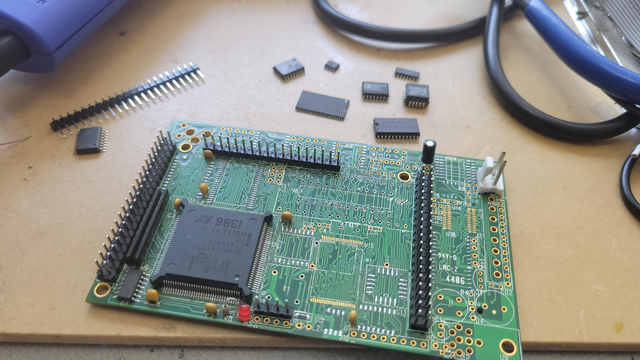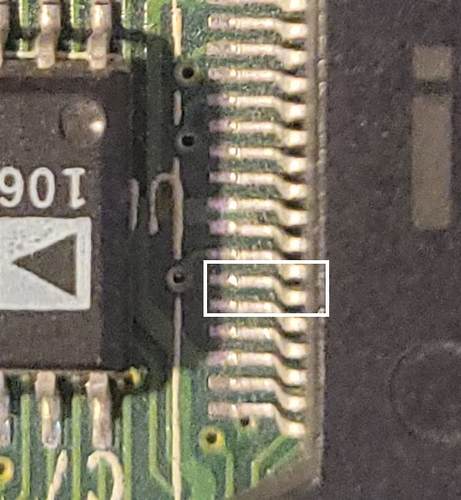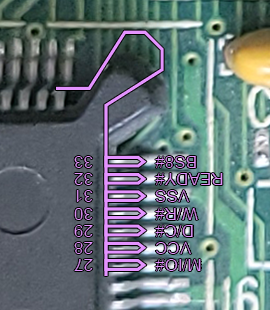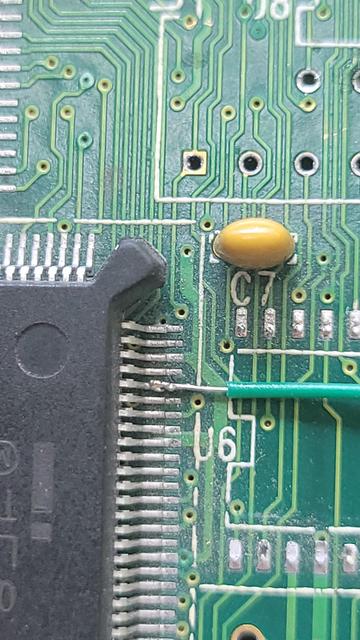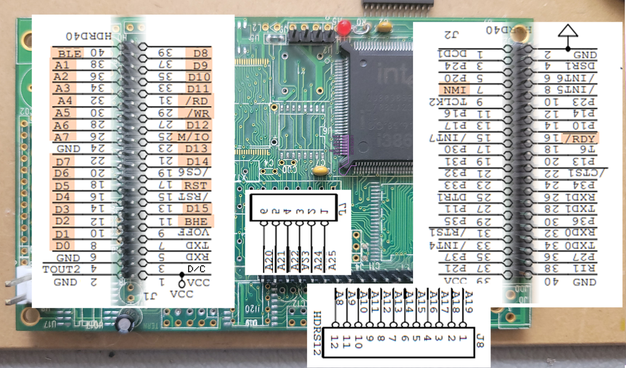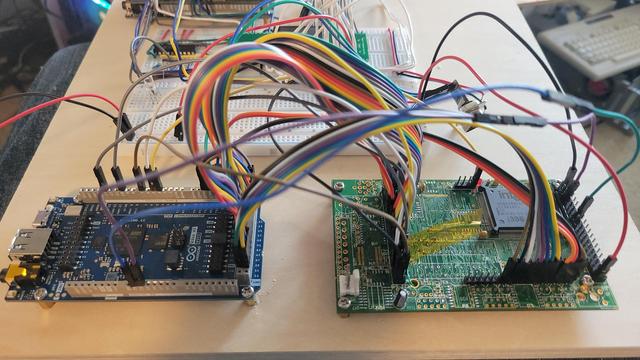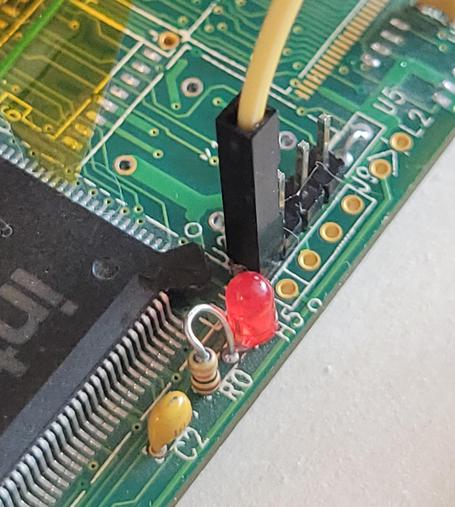Ok, starting a new thread cuz the last one is old. Since my 286 CPU appears to be dead, I figured while I wait on my next order of 80C286 chips from eBay I thought I'd work on the 386EX board.
Here's where we're at, with the board stripped of components and headers soldered on.
